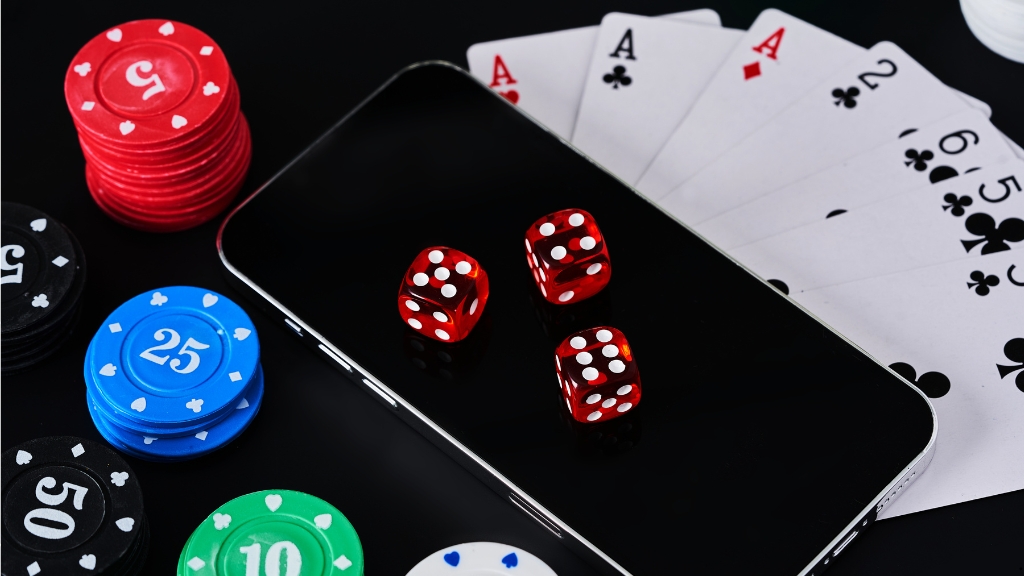Gambling can be an exciting pastime, but for some, it becomes a challenge to keep it under control. I’ve seen how easy it is to lose track of time and money when betting online, which is why self-exclusion tools are such a game-changer. They’re designed to help you take a step back and regain control when you need it most.
Using these tools effectively isn’t just about turning them on—it’s about understanding how they work and tailoring them to your needs. Whether you’re looking for a short break or a long-term solution, self-exclusion can be a powerful way to protect your well-being while still enjoying the thrill of betting responsibly.
Understanding Self-Exclusion Tools
Self-exclusion tools restrict access to betting platforms, helping individuals manage their gambling behaviors. These tools serve as a proactive measure in promoting responsible gambling.
What Are Self-Exclusion Tools?
Self-exclusion tools allow users to limit or block their access to gambling sites for specific durations, such as one month, six months, or longer. Platforms like GamStop in the UK and software such as BetBlocker offer customizable exclusion options. Users can also block individual accounts or entire categories of gambling. These tools often require proper identification during setup to ensure enforcement across partnered platforms.
Why Are They Important for Responsible Gambling?
Self-exclusion tools protect individuals from impulsive gambling behaviors, creating a structured way to pause or step away. They encourage thoughtful decision-making by enforcing timeouts, reducing the immediate temptation to gamble during moments of vulnerability. GamStop, for example, has reported a significant reduction in problematic gambling behaviors among its users. These tools ultimately promote a safer gambling environment by aligning usage limitations with personal control objectives.
How Self-Exclusion Tools Work
Self-exclusion tools function by enabling individuals to regulate their gambling habits through restricted platform access. These tools integrate with betting sites or external software to enforce controls based on user-defined preferences.
Key Features of Self-Exclusion Tools
- Duration Settings
Duration settings allow users to specify the length of the exclusion. Options typically range from temporary periods, like 24 hours, to permanent bans, depending on individual needs.
- Comprehensive Coverage
Advanced tools cover multiple platforms by connecting to a network of betting sites. For instance, GamStop links to UK-licensed operators, ensuring broader protection.
- Platform Integration
Self-exclusion can function through internal site features or external software. Some tools, such as Gamban, block gambling-related content across devices, covering apps and websites.
- Self-Management Controls
Users manage exclusions directly, with options like time reminders and spend limits often integrated to complement bans.
- Accountability Measures
Removing self-exclusion is intentionally difficult. Users typically need to submit requests or complete waiting periods, ensuring decisions aren’t impulsive.
Common Types of Self-Exclusion Options
- Site-Specific Tools
Individual betting platforms often have built-in tools, enabling users to exclude themselves from a single site. For example, many online casinos include self-exclusion features in account settings.
- Multi-Site Programs
Programs like GamStop enable users to block access to numerous operators simultaneously. These tools are ideal for those engaging with multiple platforms.
- Device-Based Software
Software such as BetBlocker covers all devices linked to a user, blocking gambling content entirely. This option helps protect against workarounds, like creating new accounts.
- Banking Restrictions
Some banks provide controls to block transactions related to gambling. This financial exclusion is useful when combined with other tools.
- Geographic Restrictions
Regional tools, like Spelpaus in Sweden, prevent access to nationally licensed platforms. These options cater to specific regulatory environments.
Setting Up Self-Exclusion on Betting Sites
Configuring self-exclusion tools on betting platforms requires clear steps and careful planning. A well-structured approach enhances its effectiveness in managing gambling habits.
Step-by-Step Guide to Activating Self-Exclusion
- Locate the Self-Exclusion Section
I access the responsible gambling or account settings section on the betting site’s platform. Most sites include direct links or clearly labeled options for initiating self-exclusion.
- Select the Self-Exclusion Feature
I choose the self-exclusion tool from the list of available options. Platforms may offer various tools, including temporary time-outs, permanent bans, or extended exclusion programs.
- Specify the Exclusion Parameters
I enter my preferred exclusion settings, such as duration and scope. This step allows me to define whether the exclusion applies only to the current site or across multiple affiliated sites.
- Confirm and Activate
I carefully review my choices before confirming. Once confirmed, the system activates the exclusion, at which point I lose access to the site’s betting services within seconds.
- Receive Confirmation
The platform typically provides a confirmation message or email verifying that my self-exclusion request is active. This ensures there’s clarity on when my exclusion takes effect.
Choosing the Right Self-Exclusion Duration
Selecting the appropriate exclusion duration aligns with personal needs and gambling patterns. Short-term exclusions, such as 24 hours or 7 days, help manage temporary impulses. Medium-term durations, often ranging from 1 month to 6 months, assist in breaking recurring gambling cycles. For those aiming for long-term control or quitting entirely, durations extending to 5 years or permanent bans are better choices.
I consider my existing gambling behaviors and triggers before deciding. For example, if gambling feels addictive, longer durations promote a healthier recovery period. By tailoring the duration to my circumstances, I enhance the tool’s ability to protect me effectively.
Tips for Using Self-Exclusion Tools Effectively
Effectively using self-exclusion tools requires adopting additional strategies and maintaining a strong commitment to the decision. Aligning these tools with personal goals ensures better control over gambling habits.
Combining Self-Exclusion with Other Strategies
I combine self-exclusion tools with complementary approaches to strengthen gambling control. Setting financial limitations, such as daily or monthly spending caps, reduces the risk of excessive losses. Using banking tools that block gambling-related transactions adds a secondary layer of protection.
Joining support groups like Gamblers Anonymous provides emotional reinforcement for managing impulses. Professional counseling or therapy enhances this process by addressing the root causes of problematic gambling. Installing device-based blocking tools like BetBlocker ensures restricted access across multiple platforms.
Diversifying my time with non-gambling activities shifts focus to healthier habits. For instance, pursuing hobbies, engaging in fitness routines, or spending more time with family creates a balanced lifestyle unrelated to gambling. By combining these strategies with self-exclusion, I amplify the effectiveness of control measures.
Staying Committed to Your Decision
I remain firm in my commitment to self-exclusion by regularly reminding myself of the goals I’ve set. Reviewing the negative impacts of past gambling behavior reinforces the importance of this decision. I avoid reinstalling apps or bypassing restrictions, as doing so undermines the purpose of self-exclusion tools.
Seeking encouragement from trusted friends or family keeps me accountable. Sharing my progress motivates me to continue making responsible choices. If urges arise, I implement distraction techniques, such as engaging in physical activity, to redirect my focus.
Tracking milestones, like the duration of maintained exclusion, allows me to celebrate progress. Keeping a journal of improvements in financial stability and emotional well-being highlights the benefits of staying consistent.
Challenges of Self-Exclusion and How to Overcome Them
Self-exclusion tools can be highly effective when used correctly, but several challenges may arise during the process. Addressing these obstacles requires specific strategies and, in some cases, external support.
Managing Temptations During Self-Exclusion
Resisting the urge to gamble is one of the most significant challenges during a self-exclusion period. Accessing alternative forms of entertainment diminishes the focus on gambling. For example, engaging in hobbies like sports, art, or gaming provides meaningful distractions.
Monitoring triggers that lead to gambling strengthens self-control. I focus on avoiding specific environments or situations that prompt betting, such as watching sports betting advertisements or visiting venues where gambling is promoted.
Involving trusted individuals can offer accountability and emotional support. Sharing self-exclusion decisions with friends or family encourages them to assist me in staying committed.
Knowing When to Seek Professional Help
If controlling gambling behaviors becomes overwhelming despite self-exclusion, consulting a professional offers additional guidance. Therapists specializing in gambling addiction use cognitive-behavioral techniques to address compulsive habits.
Support groups like Gamblers Anonymous connect individuals with shared experiences, creating a sense of community. I leverage these resources if personal efforts and tools don’t fully address my challenges.
Recognizing the need for professional help creates opportunities for long-term recovery while complementing the benefits of self-exclusion tools.
Conclusion
Using self-exclusion tools effectively requires a proactive approach and a genuine commitment to change. These tools are powerful resources for regaining control over gambling habits, but their true impact lies in how they’re integrated with personal strategies and support systems.
By combining self-exclusion with financial controls, emotional support, and alternative activities, it’s possible to create a balanced lifestyle that prioritizes well-being. Staying mindful of triggers and being open to professional help when needed can further strengthen recovery efforts.
Taking these steps can transform self-exclusion into a meaningful tool for fostering healthier habits and a safer gambling environment.



